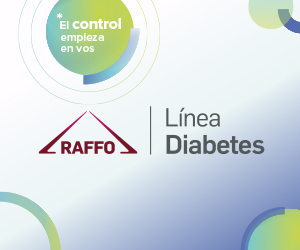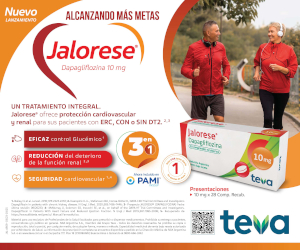Importance of the management of postprandial glucose in type 2 diabetes. Treatment and new therapeutics
DOI:
https://doi.org/10.47196/diab.v48i1.179Keywords:
type 2 diabetes, post-prandial glucose and GLP-1Abstract
Optimal glycemic control is important for reducing the risks of chronic complications in type 2 diabetic patients. However there are a high percentage of patients treated with insulin and /or oral diabetic drugs that do not achieve their glycated haemoglobin goals, particularly for elevated postprandial glucose.
Traditionally the management of patients with type 2 diabetes has focused on the therapeutic control of fasting plasma glucose, given the high correlation of it with glycosylated hemoglobin. There is currently extensive evidence to support that the postprandial glucose has a fundamental role in the sub-optimal glycemic control, with the complications that this entails.
The glycemic homeostasis is complex to achieve in patients with diabetes, and the therapy should be aimed at reset it. The principal objective of this review is to emphasize the importance of managing postprandial glucose in Type 2 diabetic patients, establish the current treatment and evaluate what would be the new therapeutics available.
References
Delahanty L, Simkins SW, Camelon K. Expanded role of the dietitian in the diabetes control and complications trial: implications for clinical practice. The DCCT Research Group. J Am. Diet. Assoc. 1993 Jul; 93(7):758-64, 767.
Tight blood pressure control and risk of macrovascular and microvascular complications in type 2 diabetes: UKPDS 38. UK Prospective Diabetes Study Group. BMJ. 1998 Sep. 12; 317(7160):703-13.
Colclough H, Percy J, Benford M. Levels of FPG and HbA1c control and the relationship to BMI in T2D patients treated with basal insulin and OAD therapy, presented at the 2012 72nd Scientific Session at the American Diabetes Association Meeting , 8-12 June, Philadelfia, USA. Abstrac 2416 -PO,01-D.
Monnier L, Collete C, Dunseath GJ, et al. The loss of postprandial glycemic control precedes stepwise deterioration of fasting with worsening diabetes, Diabetes Care 2007; 30:263-9.
Ceriello A, Colagiuri S. Guideline for management of postmeal glucose. http://www.idf.org/webdata/docs/Guideline_PMG_final.pdf,2007 (último acceso 22 de diciembre 2013).
Schrot R. Targeting plasma glucose: preprandial versus postprandial. Clinical Diabetes, 2004:22:169-72.
Parkin C. Is postprandial glucose control important? Is it practical in primary care settings? Clinical Diabetes, 2002; 20:71-6.
Erlinger TP, Brancati FL. Postchallenge hyperglucemia in a national sample of U.S. adults with type 2 diabetes. Diabetes Care, 2001; 24:1734-8.
Cavalot F, Pagliarino A, Valle M. Postprandial blood glucose predicts cardiovascular events and all-cause mortality in type 2 diabetes in a 14-year follow up: lessons from the San Luigi Gonzaga diabetes study. Diabetes Care, 2011; 34:2237-43.
Ferrarini E. Physiology of glucose homeostasis and insulin therapy in type 1 and type 2 diabetes. Endocrinol. Metab. Clin. N. Am. 41 (2012) 25-39.
Monnier L, Mas E, Ginet C, Michel F, Villon L, Cristol JP et al. Activation of oxidative stress by acute glucose fluctuations compared with sustained chronic hyperglycemia in patients with type 2 diabetes. JAMA 2006; 295(14):1681-1687.
Hasegawa G, Yamamoto Y, Zhi JG, et al. Daily profile of plasma %CoQ10 level, a biomarker of oxidative stress, in patients with diabetes manifesting postprandial hyperglycaemia. Acta Diabetol 2005; 42(4):179-181.
Ross R. The pathogenesis of atherosclerosis: a perspective for the 1990s. Nature 1993; 362(6423):801-809.
Ceriello A, Falleti E, Motz E, Taboga C, Tonutti L, Ezsol Z et al. Hyperglycemia-induced circulating ICAM-1 increase in diabetes mellitus: the possible role of oxidative stress. Horm Metab Res 1998; 30(3):146-149.
Ceriello A, Quagliaro L, Piconi L, Assaloni R, Da RR, Maier A et al. Effect of postprandial hypertriglyceridemia and hyperglycemia on circulating adhesion molecules and oxidative stress generation and the possible role of simvastatin treatment. Diabetes 2004; 53(3):701-710.
Kawano H, Motoyama T, Hirashima O, Hirai N, Miyao Y, Sakamoto T et al. Hyperglycemia rapidly suppresses flow-mediated endothelium-dependent vasodilation of brachial artery. J Am. Coll. Cardiol. 1999; 34(1):146-154.
Williams SB, Goldfine AB, Timimi FK, Ting HH, Roddy MA, Simonson DC et al. Acute hyperglycemia attenuates endothelium-dependent vasodilation in humans in vivo. Circulation 1998; 97(17):1695-1701.
Marfella R, Quagliaro L, Nappo F, Ceriello A, Giugliano D. Acute hyperglycemia induces an oxidative stress in healthy subjects. J Clin. Invest. 2001; 108(4):635-636.
DECODE Study Group, The European Diabetes Epidemiology Group. Glucose tolerance and cardiovascular mortality: comparison of fasting and 2-hour diagnostic criteria. Arch. Intern. Med .2001; 161:397-405.
Levitan EB, Song Y, Ford ES, et al. Is nondiabetic hyperglycemia a risk factor for cardiovascular disease? A meta-analysis of prospective studies. Arch. Intern. Med. 2004; 164:2147-2155.
Baltimore Longitudinal Study of Aging.
Tominaga M, Eguchi H, Manaka H, et al. Impaired glucose tolerance is a risk factor for cardiovascular disease, but not impaired fasting glucose. Diabetes Care, 1999 22:920-924.
Meigs JB, Nathan DM, D’ Agostino RB, et al. Framingham Offspring Study. Fasting and postchallenge glycemia and cardiovascular disease risk: the Framingham Offspring Study. Diabetes Care 2002; 25:1845-1850.
Guideline for Management of Post Meal Glucose in Diabetes, IDF 2011, available in www.idf.org (último acceso 3 enero 2014).
American Diabetes Association. Standards of medical care in diabetes 2011. Diabetes Care 2011; 34. (Suppl. 1):S11-S61.
Hanefeld M, Fischer S, Julius U, et al. Risk factors for myocardial infarction and death in newly detected NIDDM: the Diabetes Intervention Study, 11-year followup. Diabetologia 1996; 39:1577-1583.
Esposito K, Giugliano D, Nappo F, et al. Regression of carotid atherosclerosis by control of postprandial hyperglycemia in type 2 diabetes mellitus. Circulation 2004; 110:214-21.
Chiasson JL, Josse RG, Gomis R,et al. STOP-NIDDM Trial Research Group JAMA. Acarbose treatment and the risk of cardiovascular disease and hypertension in patients with impaired glucose tolerance: the STOP-NIDDM trial. JAMA 2003, Jul 23; 290(4):486-94.
Patel YR, Kirkman MS, Considine RV,et al. Effect of acarbose to delay progression of carotid intima-media thickness in early diabetes. Diabetes Metab. Res. Rev. 2013 Oct; 29(7):582-91.
Stein SA, Lamos EM, Davis SN. A review of the efficacy and safety of oral antidiabetic drugs. Expert Opin 2013; 12(2):153-75.
Ceriello A. Point: postprandial glucose levels are a clinically important treatment target. Diabetes Care, 2010; 33 (8) 1905-1907.
Owens DR, Monnier L, Bolli GB. Differential effects of GLP-1 receptor agonists on components of dysglycaemia in individuals with type 2 diabetes mellitus. Diabetes Metabolism, 2013 Dec; 39(6):485-96.
Kendall DM, Riddle MC, Rosenstock J, et al. Effects of exenatide (exendin-4) on glycemic control over 30 weeks in patients with type 2 diabetes treated with metformin and a sulfonylurea. Diabetes Care, 28(5) 1083-1091.
De Fronzo RA, Okerson T, Viswanathan P, et al. Effects of exenatide versus sitagliptin on postprandial glucose, insulin and glucagon secretion, gastric emptying, and caloric intake: a randomized, cross-over study. Curr. Med. Res. Opin. 2008 Oct; 24(10):2943-52.
Lorenz M, Pfeiffer C, Steinsträsser A, Becker RH, Rütten H, Ruus P, Horowitz M, et al. Effects of lixisenatide once daily on gastric emptying in type 2 diabetes-relationship to postprandial glycemia. Regul. Pept. 2013;10;185:1-8.
Bollim GB, Owens DR. Lixisenatide, a novel GLP-1 receptor agonist: efficacy, safety and clinical implications for type 2 diabetes mellitus. Diabetes Obes. Metab. 2013.
Rosenstock J, Raccah D, Koranyi L, et al. Efficacy and safety of lixisenatide once daily versus exenatide twice daily in type 2 diabetes inadequately controlled on metformin (Get-Goal-X), Diabetes Care 2013: 36; 2945-51.
Nauck MA, Kemmeries G, Holst et al. Rapid tachyphylaxis of the glucagon-like peptide 1-induced deceleration of gastric emptying in humans. Diabetes; 60 (5): 1561-1565.
Buse JB, Drucker DJ, Taylor KL, et al. DURATION-1: exenatide once weekly produces sustained glycemic control and weight loss over 52 weeks. Diabetes Care. 2010; 33(6):1255-61.
Wysham C, Bergenstal R, Malloy J, et al. DURATION-2: efficacy and safety of switching from maximum daily sitagliptin or pioglitazone to once-weekly exenatide. Diabet. Med. 2011; 28(6):705-14.
Diamant M, Van Gaal L, Stranks S, et al. Once weekly exenatide compared with insulin glargine titrated to target in patients with type 2 diabetes (DURATION-3): an open-label randomised trial. Lancet, 2010; 26;375:2234-43.
Russell-Jones D, Cuddihy RM, Hanefeld M, et al. Efficacy and safety of exenatide once weekly versus metformin, pioglitazone and sitagliptin used as monotherapy in drug-naive patients with type 2 diabetes (DURATION-4): a 26-week double-blind study. Diabetes Care. 2012; 35(2):252-8.
Blevins T, Pullman J, Malloy J, et al. DURATION-5: exenatide once weekly resulted in greater improvements in glycemic control compared with exenatide twice daily in patients with type 2 diabetes. J Clin. Endocrinol. Metab. 2011 May; 96(5):1301-10.
Buse JB, Nauck M, Forst T,et al. Exenatide once weekly versus liraglutide once daily in patients with type 2 diabetes (DURATION-6): a randomised, open-label study. Lancet. 2013;381(9861):117-24.
Barnett AH. The role of GLP-1 mimetics and basal insulin analogues in type 2 diabetes mellitus: guidance from studies of liraglutide. Diabetes Obes. Metab. 2012; 14(4):304-14.
Get-Goal L.
J.Vidal. Lixisenatide. A new glucagon-like peptide 1 receptor agonist in the treatment of type 2 diabetes. European Endocrinology, 2013; 9(2):76-81.
Kapitza1 C, Forst 2, Coester HV, et al. Pharmacodynamic characteristics of lixisenatide once daily versus liraglutide once daily in patients with type 2 diabetes insufficiently controlled on metformin.
Downloads
Published
How to Cite
Issue
Section
License

This work is licensed under a Creative Commons Attribution-NonCommercial-NoDerivatives 4.0 International License.
Dirección Nacional de Derecho de Autor, Exp. N° 5.333.129. Instituto Nacional de la Propiedad Industrial, Marca «Revista de la Sociedad Argentina de Diabetes - Asociación Civil» N° de concesión 2.605.405 y N° de disposición 1.404/13.
La Revista de la SAD está licenciada bajo Licencia Creative Commons Atribución – No Comercial – Sin Obra Derivada 4.0 Internacional.
Por otra parte, la Revista SAD permite que los autores mantengan los derechos de autor sin restricciones.


































